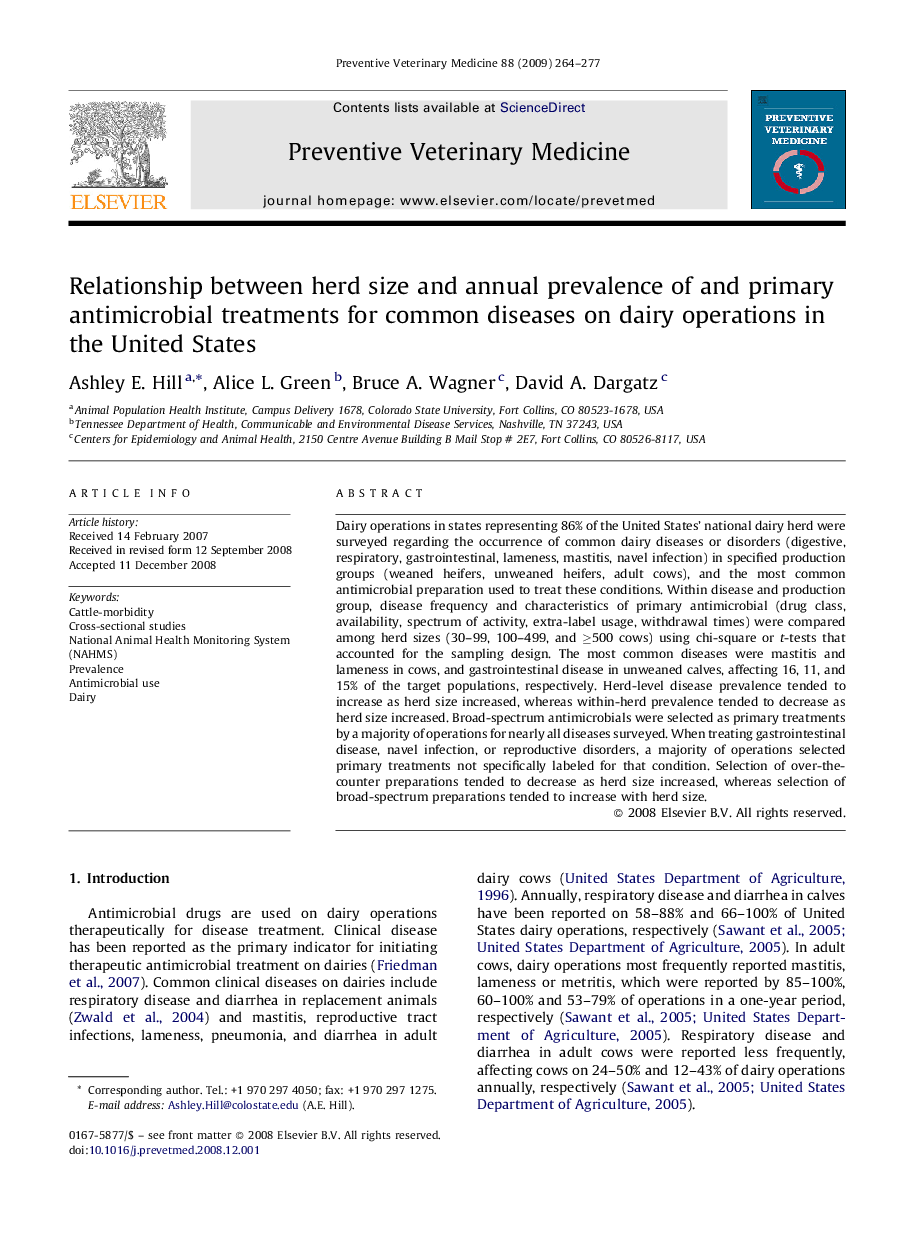| Article ID | Journal | Published Year | Pages | File Type |
|---|---|---|---|---|
| 2453210 | Preventive Veterinary Medicine | 2009 | 14 Pages |
Dairy operations in states representing 86% of the United States’ national dairy herd were surveyed regarding the occurrence of common dairy diseases or disorders (digestive, respiratory, gastrointestinal, lameness, mastitis, navel infection) in specified production groups (weaned heifers, unweaned heifers, adult cows), and the most common antimicrobial preparation used to treat these conditions. Within disease and production group, disease frequency and characteristics of primary antimicrobial (drug class, availability, spectrum of activity, extra-label usage, withdrawal times) were compared among herd sizes (30–99, 100–499, and ≥500 cows) using chi-square or t-tests that accounted for the sampling design. The most common diseases were mastitis and lameness in cows, and gastrointestinal disease in unweaned calves, affecting 16, 11, and 15% of the target populations, respectively. Herd-level disease prevalence tended to increase as herd size increased, whereas within-herd prevalence tended to decrease as herd size increased. Broad-spectrum antimicrobials were selected as primary treatments by a majority of operations for nearly all diseases surveyed. When treating gastrointestinal disease, navel infection, or reproductive disorders, a majority of operations selected primary treatments not specifically labeled for that condition. Selection of over-the-counter preparations tended to decrease as herd size increased, whereas selection of broad-spectrum preparations tended to increase with herd size.
